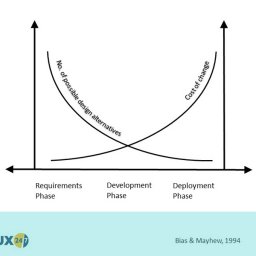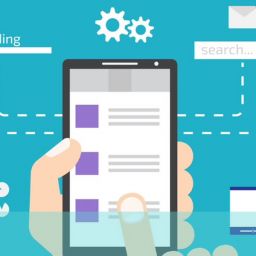
Every year, at around the same time, UX design experts worldwide make predictions about the most significant areas they expect to impact our industry. Over recent years, we’ve seen many regular contenders, such as virtual and augmented reality, AI and machine learning, responsive UI, and voice assistants, all regularly raising their heads, and rightly so, as the impacting elements pushing how we build digital products forward.
We exist in a growth mindset industry, so forward movement is a must, and that means (as you read similar articles to this) you can expect to see areas connected to technical skills and soft skills, new technologies, and changes to processes that make our products both visually appealing and ever-more intelligent. Through essential user research, we’re constantly evolving product interactions to suit user behaviours but also to encourage business growth and cater to increasing resources and sustainability demands.
We’re using more virtual assistants, promoting inclusive design, adding gestures, using more 3D, and all to create experiences and user interfaces that will delight our subscribers into being happier, more loyal, and continuing customers.
Well, this year, we’re adding our thoughts to the mix. So, with no further ado, here are our predicted UX research trends for 2024.
1. Microinteractions
We recently published a page exploring microinteractions in UX design, as we believe, as such important elements of user engagement, we’re only going to see them used more and more by UX designers to create the most enjoyable and engaging user interfaces possible.
Microinteractions are the small, subtle elements and animations that make digital interactions more fun, appealing, and informative while giving users feedback for their efforts. For example, Facebook delivered one of the best examples by not only introducing the like button but expanding it to a range of reactions for each social media post.
Other examples include swiping (where would the dating apps be without swiping?), pulling down to refresh mobile apps and pages, messaging feedback (the WhatsApp blue ticks loved and loathed in equal parts by many), and so many more.
UX-wise, they make user interfaces more engaging and fun, enhancing user experiences. Expect to see them used even more in the design process throughout 2024 as essential elements to enhance user engagement.
2. Sustainability in UX Research
Without question, sustainability is a major global topic in every industry. Apart from its marketing power, allowing us the status of ‘ethical providers’, we should all aim to work to higher, more ecologically healthy standards to protect the world we live in.
UX professionals should be searching out eco-friendly, responsible design choices. Can we enable designers to reduce their products’ carbon footprints by optimising energy usage and reducing digital waste? Sustainability is becoming a regular topic on the conference circuit; surely it’s time to use the wealth of skill and knowledge we have at our fingertips to uncover deeper insights into the ways we can combat such a crucial aspect of our design process.
3. Personalisation in UX Research
Personalisation is already a huge part of UX design. The importance of giving users just what they want and need—whether they know it or not—has changed the way we shop online, watch TV, browse the internet, and more.
Everywhere you turn online, you see personalised adverts, content, and suggestions based on the information all those clever cookies and other trackers gather. Despite first glances into personalisation appearing to benefit the user (and they do), the real benefits are to the providers and advertisers, reaching far more potential customers and hooking users into their products.
As our needs become more demanding, UX designers will have to explore how they can provide users with more relevant content and remove those items that are no longer needed or necessary.
Understanding individual user needs is at the heart of the problem, but however UX design advances to improve customer satisfaction, we must remember our explorations and introductions are bound by ethical boundaries and data protection laws.
4. Research repositories
With budgets getting squeezed, accessing or revisiting existing data will play a big part in recycling resources to understand users’ behaviours instead of funding further exploration.
For a full introduction to research repositories, you can read our article here.
Research repositories are libraries of all the data you’ve acquired already, centralised in one place. They should be the first stop for UX researchers digging into a new project. By recycling our data, we can be more consistent, streamline our research process, and make informed decisions faster.
Expect to see more UX professionals push for research repositories, especially in a weak economy where the bottom line is becoming more of a factor.
5. Research democratization
Another area that affects budgets is democratization. We touched on this while discussing the role of the UX researcher and why it’s still essential to leave the specialist tasks to specialist practitioners.
However, to stay on budget—where budgets are becoming tighter—more operations are utilising non-professional researchers to conduct suitable studies, leaving the critical work in the hands of qualified UX researchers.
It allows stakeholders, product managers, and their teams to cover more research more economically. While it’s a practice we’ll see more of in 2024, the crucial parts of each project must still be handled by those with the correct qualifications and experience to deliver the necessary solutions.
6. AI and stupid ideas: Pretend participants (we think this is crazy)
In the current economy, where resources are precious, artificial intelligence has introduced a new way of conducting user research using emerging technologies. AI systems now provide ‘synthetic users’—that’s right, users generated by artificial intelligence for their opinions on your products. Run your ideas and products through these systems, and they’ll provide you with immediate suggested pitfalls and solutions.
While they may be able to offer insights, are they really an accurate representation of our eventual users—real people? There are still so many UX methods that require human users, but as UX design trends go, this one’s just a bit too out there for us. We want to create user interfaces, segments, navigation, and solutions for real people, so when we conduct usability testing, we’ll always stick to a pool of thinking, feeling, and fallible humans.
7. AI will be used more in UX research
AI is growing at an incredible rate and is changing the landscape of almost everything we do. Expect to see more automated processes, productivity, segmentation, visualisations, and personalised experiences, improved data collection, speech, emotion, sentiment, and contextual analysis, to name but a handful.
While many of these forward movements will better equip us to do our essential work, the danger is that UX research will become too automated, running on autopilot instead of being managed by real people to deliver quantifiable and sensible results.
We’re excited to move with emerging technologies that enable UX designers to work better, faster, and more efficiently, allowing us to provide better value to our clients throughout the UX industry. However, we’ll be keeping a close eye on the AI we use as we move into the future of UX, ensuring that the user input we base our findings on comes from real users.
For a deeper dig into how I see AI helping UX designers move forward, you can read the piece I wrote for Medium on the subject.
8. Continuous research will grow
UX designers know the product launch isn’t the end of the UX journey. The market, their users, and their business needs are constantly evolving, requiring their UX research to evolve with them. That means more user testing and more qualitative and quantitative research to deliver constant user satisfaction to match their business strategy.
To minimise the risk of your constantly evolving product failing your users over the long term or within the near future, expect to see more continuous research applied to analytics, regular feedback, and quantitative data from sales and support teams.
9. Greater use of quantitative data: i.e. more evidence/numbers
In modern UX research—much like in many avenues of psychology—some see much of our qualitative research as a soft science despite uncovering how bonafide users feel and react while using products.
Are user experiences subjective? We don’t think so, but when stakeholders invest their valuable resources in UX design, they often feel safer using hard facts and figures to direct the build of their products. Quantitative research data is easier to understand and analyse, providing clear insights quickly and objectively.
However, with more advanced biometric methods integrated into UX research, we’ll have new options to deliver quantitative measurements of qualitative techniques. This is one UX trend we can really get behind.
Summing up
We’re not sure whether our view on UX research trends lines up with other industry experts, but when it comes to the future of UX, we believe user engagement will continue to drive product success. We’re eager to see how UX design processes move with the times and the introduction of new technologies, yet not at the cost of high-quality, authentic results.
Whatever UX trends the new year brings, and how the future of UX appears, we’ll be watching eagerly, ready to move with the times and provide a better, more intelligent service for our clients.
Our user research experts are available to help you get closer to your customers. If you would like to arrange a no obligation call, get in touch by emailing us at hello@ux247.com or share your requirement using the form below.
















